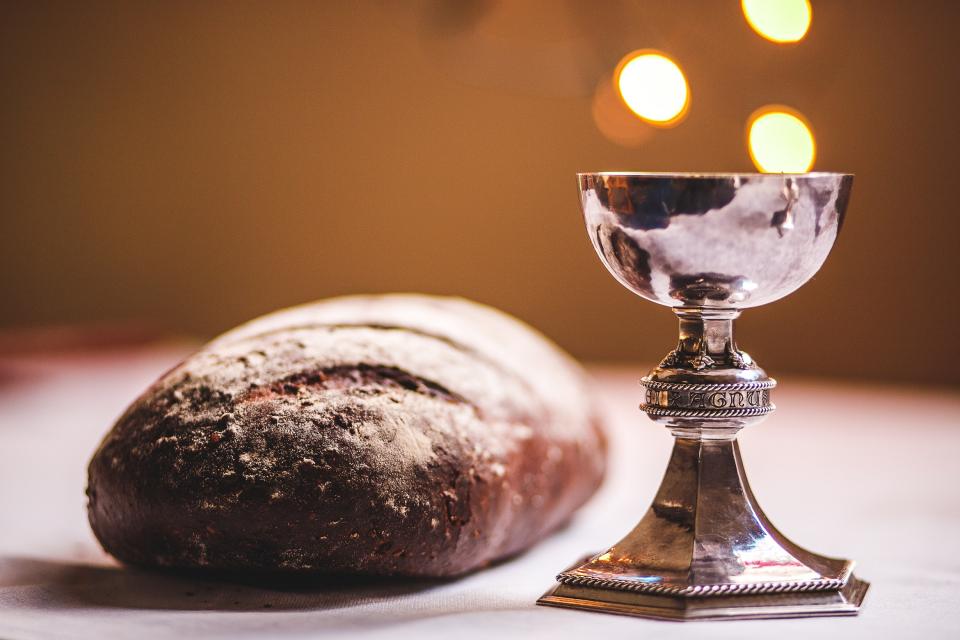One of the sure signs of “Covid-tide” in Anglican churches is the absence of the common cup at Holy Communion. The priest partakes of both the bread and wine, while the congregation receives the bread only. It’s a commonsensical public health measure, regrettable, no doubt, but absolutely necessary under the circumstances.
But it raises an interesting question. If you receive only the bread of the Eucharist, are you “getting” only part of Jesus? His body only, but not his blood? Theologians are paid to worry about questions like this, though they are often the sorts of things ordinary Christians wonder about.
The answer to this particular question, in case you’re wondering, is “no.” In receiving either the bread or the wine you’re receiving the whole Christ, body and blood, divinity and humanity —everything that makes Jesus, Jesus. Medieval theologians called this the doctrine of “concomitance.” Unfortunately, the idea was used in the Middle Ages to justify withholding the cup from the laity (one didn’t want to risk spilling Christ’s holy blood); but the teaching itself is a sound one. In our own time, it’s been a comforting doctrine for all those who, for medical or personal reasons, can’t receive one or the other of the sacramental elements. And now it has found a new use, for as long as the pandemic prevents our drinking from what Paul called “the cup of blessing ” (1 Corinthians 10:16). The sacrament is Christ’s gift of himself, and nothing—not even a pandemic—will keep him from bestowing it.
Yet having said all that, I find that I still miss the chalice. My reasons for this are in some ways quite personal. I first began attending Anglican services as a university student, at a parish that, without being self-conscious, approached worship with a certain solemnity and dignity. Prominent on the Communion table was the silver chalice, over which the priest would place his hand and speak the words: “Drink ye all of this; for this is my Blood of the New Testament, which is shed for you, and for many, for the remission of sins. Do this, as oft as ye shall drink it, in remembrance of me.” Kneeling at the Communion rail and drinking from that cup was an “awful” moment, in the old-fashioned sense of that word—awe-inspiring and mysterious, while at the same time deeply personal. Looking back, I can see how the Scripture-saturated language of the Prayer Book located me sacramentally within the strange world of the Bible. The chalice was a big part of that. It was experiences like these that would eventually set me on the path to becoming an Anglican.
But whether one is Anglican or not, it’s important that Holy Communion involves not just one sign but two. We can think of the bread and the wine as each “saying” something slightly different. The bread says food, nurture, sustenance, Christ feeding his people (with himself!) as God fed the Israelites in the wilderness. The wine speaks of life, abundance, joy, like the wine Jesus miraculously provided for the wedding at Cana. But it also says blood—life poured out, given, for the “many,” for all those who have “washed their robes and made them clean in the blood of the Lamb” (Revelation 7:14). Perhaps the simplest explanation of the chalice is that given by the great priest-poet George Herbert:
Love is that liquor sweet and most divine,
Which my God feels as blood; and I, as wine. (Herbert, “The Agonie”)
Right now in Toronto, we can’t—unless we’re clergy—actually drink the wine of the Supper. Pray for the day when we can once again do so! But we can know that Love’s “liquor sweet and most divine” is poured out for us all the same, and be thankful.





